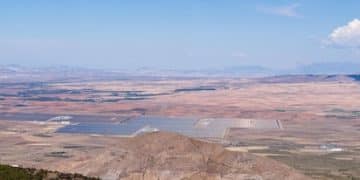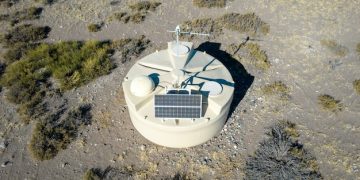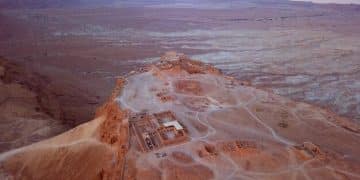Mexico Infrastructure Investment: Risks & Rewards Under Current Admin
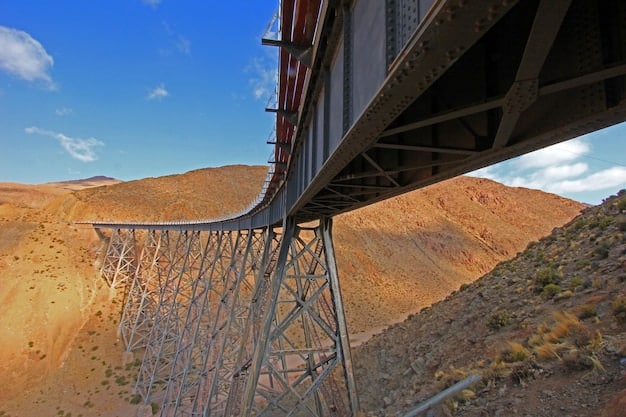
Investing in Mexico’s infrastructure projects under the current administration presents a complex landscape characterized by significant potential for economic growth and regional integration, alongside considerable political, regulatory, and financial uncertainties that demand thorough due diligence from international investors.
For discerning investors navigating the dynamic landscape of emerging markets, Mexico has long represented a compelling proposition. However, understanding what are the potential risks and rewards of investing in Mexico’s infrastructure projects under the current administration requires a nuanced perspective, blending economic foresight with political acumen. This analysis aims to dissect the intricate layers of opportunity and challenge that define this crucial sector, particularly under the current political climate.
Mexico’s Infrastructure Vision: Current Administration’s Blueprint
Mexico’s current administration has embarked on an ambitious infrastructure agenda, aiming to modernize key sectors and stimulate regional development. This vision is not merely about construction; it is a strategic approach to boost economic competitiveness and improve the quality of life for its citizens. Understanding the scope and priorities of these projects is fundamental for any potential investor.
Key Projects and Strategic Focus
The administration’s infrastructure blueprint centers on several flagship projects, designed to enhance connectivity, energy security, and trade flow. These initiatives often involve significant public investment, signaling a strong governmental commitment, and are strategically located to unlock new economic corridors. Their success is seen as pivotal for the nation’s long-term economic health.
- The Mayan Train: A sprawling railway system intended to connect tourist destinations and stimulate economic activity across the Yucatán Peninsula. Its scope extends beyond tourism, aiming to facilitate agricultural and cargo transport, thereby integrating southern Mexico more deeply into the national economy. Challenges relate to environmental impact and land ownership disputes.
- Dos Bocas Refinery: A key component of the administration’s energy sovereignty push, this refinery aims to reduce Mexico’s reliance on imported fuels. While strategically important, its substantial cost overruns and construction timeline have raised concerns among some observers. Energy infrastructure projects often entail complex regulatory and environmental assessments.
- Isthmus of Tehuantepec Interoceanic Corridor: Envisioned as an alternative to the Panama Canal, this project seeks to connect the Pacific and Atlantic oceans via rail, highway, and port development. It holds immense potential for global trade logistics but also faces hurdles relating to local community engagement and land rights.
These projects exemplify the administration’s dual objectives: driving economic development while simultaneously asserting greater national control over strategic assets. The emphasis on regions historically underserved by infrastructure development also reflects a social component, aiming to reduce inequalities. This focus on domestic content and labor can be a double-edged sword, fostering local growth while potentially increasing project costs and timelines.
The administration has also prioritized infrastructure that supports national development goals, such as improvements in water management and telecommunications, although these often receive less media attention than the larger flagship projects. The emphasis on these foundational elements underscores a holistic approach to national development, recognizing that robust infrastructure is the bedrock of sustained economic progress. Investors looking at Mexico must consider not just the marquee projects, but also the broader policy environment that shapes the infrastructure landscape.
Economic Rewards for Investors: Tapping into Growth Potential
The allure of investing in Mexico’s infrastructure lies in its substantial economic rewards, driven by a confluence of demographic advantages, strategic geographic positioning, and a growing domestic market. For investors, these projects offer opportunities for long-term capital appreciation and stable returns, particularly given the fundamental need for modern infrastructure in a developing economy.
Demographic Dividend and Nearshoring Trend
Mexico possesses a youthful and growing population, which translates into a strong labor force and increasing consumer demand, both vital for sustaining infrastructure projects. The country’s strategic location, bordering the United States, has also amplified the “nearshoring” trend, as companies seek to relocate supply chains closer to North American markets. This trend generates significant demand for logistics, industrial, and energy infrastructure, creating lucrative investment avenues.
- Increasing demand for industrial parks and manufacturing facilities: As companies nearshore, they require modern infrastructure to support their operations, from reliable power grids to efficient transportation networks. This spurs investment in industrial real estate and related utilities.
- Growth in cross-border trade and logistics: The surge in trade between Mexico and the US necessitates expanded port capacities, improved road and rail links, and advanced customs facilities. This directly benefits investors in transportation and logistics infrastructure.
- Demand for housing and urban services: Rapid urbanization, partly driven by industrial growth, creates a pressing need for affordable housing, water, sanitation, and public transportation. These are often less glamorous but equally essential infrastructure investment areas.
The nearshoring phenomenon, while presenting clear opportunities, also places immense pressure on existing infrastructure. Bottlenecks in transportation, energy supply, and water management can quickly emerge, highlighting the urgent need for new and upgraded facilities. This urgency, in turn, creates a conducive environment for private investment, particularly for projects that can be swiftly implemented and scaled. The integration of modern technology, such as smart city solutions and advanced logistics platforms, further enhances the appeal of these investments by promising greater efficiency and resilience.
Furthermore, Mexico’s active participation in various trade agreements, including the USMCA, solidifies its position as a key player in global supply chains. This regulatory stability, combined with a favorable demographic profile, enhances the predictability and reduces the systemic risks associated with long-term infrastructure investments. Investors can therefore anticipate a steady pipeline of projects driven by both internal demand and external trade dynamics, offering diversified opportunities across various infrastructure sub-sectors.
Navigating Political and Regulatory Risks Under the Current Administration
While the economic rewards of investing in Mexico’s infrastructure are enticing, a comprehensive understanding of the political and regulatory landscape under the current administration is paramount. Investors must meticulously assess these risks, as they can significantly impact project viability, profitability, and long-term sustainability. The governmental approach to foreign investment, contracts, and dispute resolution can create both opportunities and formidable hurdles.
Policy Volatility and Contractual Clarity
One of the primary concerns for investors is the perceived policy volatility. Changes in governmental priorities, particularly concerning existing contracts or concessions, can introduce uncertainty. The administration’s focus on national sovereignty and state-led development for strategic sectors, such as energy, has led to a re-evaluation of previous public-private partnerships (PPPs) and a preference for state-owned enterprises (SOEs) in certain areas. This shift can complicate the operational environment for private and foreign players.
The current administration has, at times, demonstrated a willingness to review and, in some cases, invalidate contracts or permits granted under previous governments, especially in the energy sector. This approach, while rooted in a declared fight against corruption, creates an environment where contractual obligations may not be as robust as international investors prefer. Clarity on long-term regulatory frameworks, intellectual property rights, and dispute resolution mechanisms becomes critical. Investors are often advised to seek strong legal counsel and consider robust arbitration clauses in their agreements.
Another aspect is the role of legal frameworks and independent regulatory bodies. While Mexico has established institutions, their autonomy and efficacy can be influenced by political currents. The consistency in applying regulations, particularly environmental and social impact assessments, is often a point of scrutiny. Delays in obtaining permits, changes in regulatory interpretations, or even the perception of political interference can lead to project cost overruns and delays, eroding investor returns.
Furthermore, the administration’s emphasis on social considerations and community consent, while important for sustainable development, can also pose challenges. Projects, particularly large-scale ones like the Mayan Train, have faced delays and legal challenges related to environmental concerns and indigenous land rights. Investors must be prepared for extensive community engagement and social impact assessments, which require significant resources and a deep understanding of local dynamics.
Financial Considerations and Funding Mechanisms
Investing in large-scale infrastructure projects inherently involves significant financial considerations and a clear understanding of funding mechanisms. In Mexico, this landscape is shaped by a mix of public investment, private capital, and evolving financial models, all influenced by the current administration’s budgetary priorities and investment philosophy.
Public-Private Partnerships and State Role
While the administration has shown a preference for greater state involvement in strategic projects, there remains a recognized need for private capital to bridge Mexico’s infrastructure gap. Public-Private Partnerships (PPPs) are still a viable, albeit evolving, funding mechanism, though perhaps with different structures or conditions than in previous administrations. Investors must carefully assess the balance of risk and reward in these partnerships, especially where the government retains a controlling stake or significant influence.
- Availability of public funds: The government’s fiscal health and budgetary allocation for infrastructure directly impact the appetite for new projects and the feasibility of co-financing. Economic downturns or unexpected spending priorities (e.g., social programs) can divert funds, affecting project timelines.
- Access to international financing: Mexico’s credit ratings and its relationships with multilateral development banks (e.g., World Bank, IDB) and international financial institutions are crucial. Favorable borrowing conditions can make large projects more attractive and feasible, while downgrades can increase the cost of capital.
- Local financial market capacity: The capacity of Mexico’s domestic banking sector and capital markets to fund major infrastructure projects is a limiting factor. Foreign direct investment and international bond issuances often play a critical role, making investor confidence in Mexico’s macroeconomic stability paramount.
The government’s fiscal discipline and its commitment to prudent debt management are key indicators for potential investors. Any signs of fiscal strain or increased public debt can raise concerns about the long-term viability of public infrastructure commitments and the state’s ability to honor guarantees within PPP frameworks. Furthermore, the transparency and efficiency of public procurement processes are vital for attracting reputable international investors, as these directly affect project costs and execution risks.
Moreover, the financial models for infrastructure projects often vary, ranging from direct public financing to fully privately financed initiatives and various forms of PPPs. Investors need to be adept at evaluating the specific project finance structures, understanding revenue streams, debt service coverage ratios, and equity returns, particularly given the long-term nature of these investments. The ability to secure adequate and reasonably priced insurance, particularly political risk insurance, also forms a critical part of the financial assessment, offering a layer of protection against non-commercial risks.
Social and Environmental Considerations: Impact and Compliance
Beyond economic and financial metrics, the social and environmental implications of infrastructure projects in Mexico are increasingly critical factors for investors. The current administration has emphasized community well-being and ecological protection, which translates into stricter compliance requirements and greater public scrutiny. Ignoring these aspects can lead to significant delays, increased costs, and reputational damage.
Community Relations and Sustainability Standards
Engaging effectively with local communities and adhering to robust environmental sustainability standards are no longer optional but fundamental requirements for successful project development. Projects that fail to adequately address these concerns often face resistance from local populations, legal challenges, and scrutiny from international non-governmental organizations (NGOs). Investors must therefore commit to best practices in social and environmental impact assessment.
- Indigenous and community rights: Mexico has legal frameworks recognizing collective land rights and the right to prior, free, and informed consultation for indigenous communities potentially affected by development projects. Failure to properly conduct these consultations can halt projects. Investors must ensure their projects are built on a foundation of respect for indigenous and local community rights.
- Environmental impact assessments (EIAs): Strict EIAs are required for major infrastructure projects. These assess potential impacts on biodiversity, water resources, air quality, and climate. Non-compliance or inadequate mitigation measures can lead to fines, project suspension, or revocation of permits. Sustainable construction practices and clear environmental mitigation plans are essential.
- Water management and resource scarcity: Many regions in Mexico face water stress. Infrastructure projects, particularly those involving heavy industry or large populations, must demonstrate responsible water usage and contribute to sustainable water management solutions. This might include implementing water-efficient technologies or participating in water conservation initiatives.
The administration places a strong emphasis on projects benefitting local communities, often integrating social programs alongside infrastructure development. This can mean hiring local labor, procuring local goods and services, and investing in community facilities. For investors, this requires a shift from a purely profit-driven mindset to one that incorporates social value creation, often leading to more resilient and accepted projects. Neglecting these social aspects can lead to protests, litigation, and negative publicity, which can derail even the most financially promising ventures.
Furthermore, Mexico faces pressing environmental challenges, including deforestation, water pollution, and climate change vulnerability. Large infrastructure projects, therefore, come under intense scrutiny regarding their ecological footprint. Investors are increasingly expected to demonstrate commitments to climate resilience, adopt green building practices, and consider the long-term environmental sustainability of their operations. This includes exploring renewable energy sources for project operations and implementing waste management strategies that align with national environmental goals.
Assessing the Overall Investment Climate and Future Outlook
The investment climate in Mexico, particularly for infrastructure, is a tapestry woven with threads of opportunity and caution. While the immediate focus is on the current administration, prudent investors also look beyond the present term to anticipate future policy directions and macroeconomic stability. A comprehensive assessment requires evaluating not only specific projects but also the broader institutional and economic trajectory of the country.
Institutional Framework and Global Positioning
Mexico possesses a well-established institutional framework for investment, including legal protections and dispute resolution mechanisms. However, as noted, the perceived strength and independence of these institutions can fluctuate. Investors often evaluate the rule of law, transparency in governance, and the predictability of policy execution as critical indicators of investment safety. A strong, independent judiciary and regulatory bodies are crucial for ensuring a level playing field and protecting investor rights.
Globally, Mexico continues to be a crucial emerging market, benefiting from its size, diversified economy, and integration into North American supply chains. Its efforts to attract foreign direct investment are ongoing, albeit with varying degrees of success depending on the sector and specific policies in place. The country’s credit ratings, foreign exchange reserves, and inflation outlook are continually monitored by international investors as proxies for macroeconomic stability and the government’s capacity to fulfill its financial obligations.
Looking ahead, the long-term outlook for Mexico’s infrastructure needs remains robust. Population growth, urbanization, and the ongoing push for economic modernization will continue to drive demand for improvements in transportation, energy, water, and digital connectivity. Regardless of which political party is in power, the fundamental requirement for strategic infrastructure will persist, creating a continuous pipeline of potential projects for investors.
However, the nature of these projects and the preferred financing models may evolve. Future administrations might place greater emphasis on different sectors, revive certain PPP models, or increase the role of sustainable and green infrastructure initiatives. Therefore, investors with a long-term horizon must build flexibility into their strategies, staying informed about political transitions and adapting their approaches to align with changing governmental priorities and market conditions. The ability to assess and adapt to these shifts will be key to unlocking the full potential of Mexico’s infrastructure investment opportunities.
| Key Point | Brief Description |
|---|---|
| 📈 Economic Rewards | Growth from nearshoring, large domestic market, and strong trade ties to USMCA drive infrastructure demand. |
| ⚖️ Political Risks | Policy changes, contractual reviews, and government preference for state-led projects add uncertainty. |
| 💸 Financial Models | Mix of public and private funding, with evolving PPP structures and reliance on international financing. |
| 🌿 Social & Env. | Crucial need for robust community engagement and strict environmental compliance to ensure project viability. |
Frequently Asked Questions About Mexican Infrastructure Investment
▼
Key risks include political changes affecting project continuity, regulatory shifts impacting contract terms, increased state intervention in strategic sectors, and potential social opposition from local communities. Additionally, a fluctuating peso and bureaucratic inefficiencies can pose challenges for foreign capital.
▼
Investors can anticipate significant returns driven by a growing middle class, a young workforce, and the “nearshoring” trend that boosts demand for industrial, logistics, and energy infrastructure. Stable returns are also possible from essential utilities, and Mexico’s strong trade ties offer long-term growth.
▼
The administration’s focus on large national projects, like the Mayan Train or Dos Bocas Refinery, may prioritize state control and domestic content over foreign private participation in certain areas. This can limit opportunities for some investors while potentially creating others through related supply chain and service contracts.
▼
▼
Yes, PPPs remain viable, although their structure and terms may have evolved. The government acknowledges the need for private capital. Investors must conduct thorough due diligence on specific PPP arrangements, as the risk-sharing dynamics and government’s role might differ from previous administrations.
▼
Environmental and social factors are increasingly critical. Projects must adhere to strict environmental impact assessments and respect community rights, including indigenous consultations. Failure to address these can lead to significant delays, legal challenges, and reputational damage, making them vital for project success.
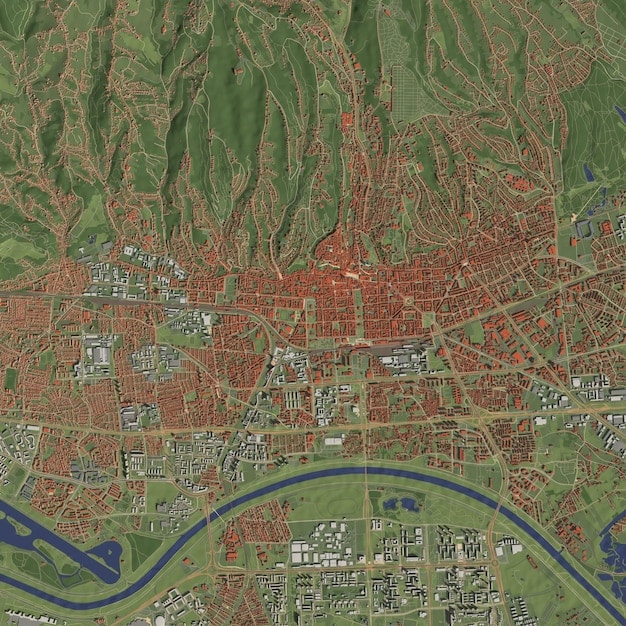
Conclusion
Investing in Mexico’s infrastructure projects under the current administration presents a compelling, yet intricate, proposition. While the substantial rewards rooted in demographic trends, nearshoring, and strategic geography are undeniable, a pragmatic approach demands careful consideration of the inherent risks—from policy shifts and regulatory ambiguities to nuanced social and environmental compliance. Success hinges on a deep understanding of the evolving political landscape, a commitment to robust due diligence, and a willingness to adapt investment strategies to align with Mexico’s unique developmental priorities. For those prepared to navigate this dynamic environment, the opportunities to contribute to and benefit from Mexico’s ongoing modernization remain significant.




